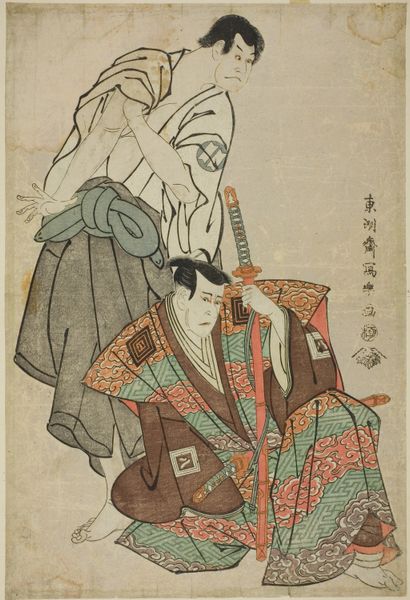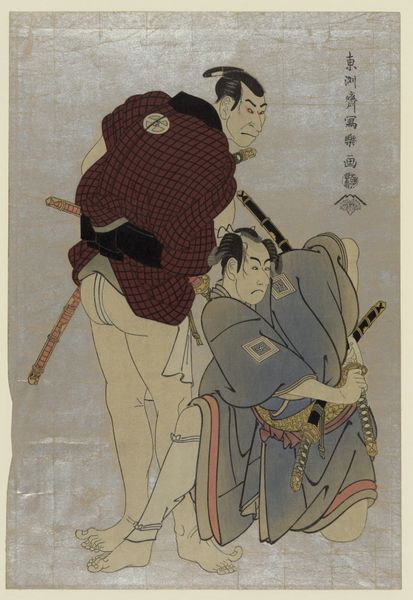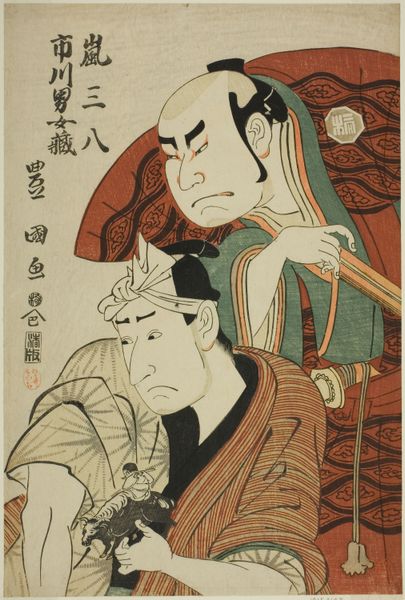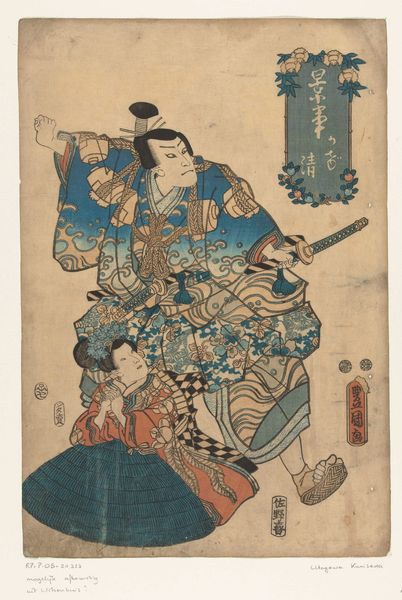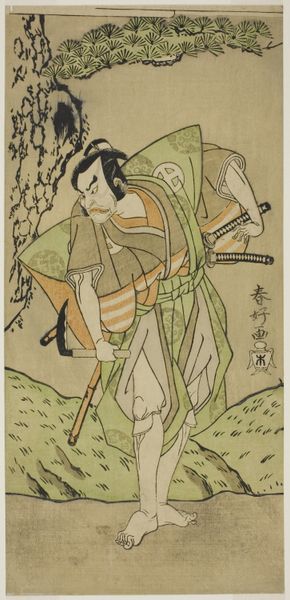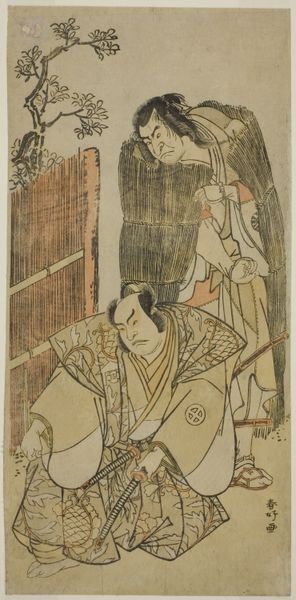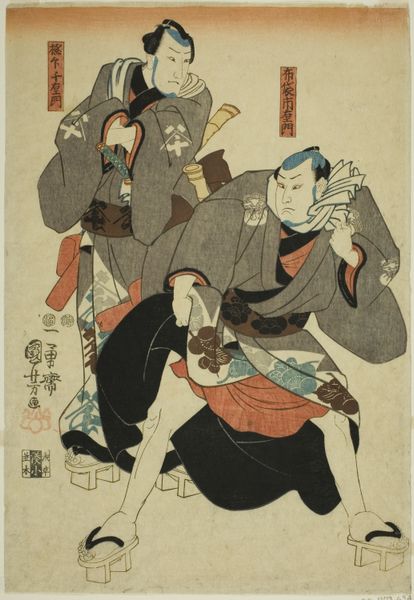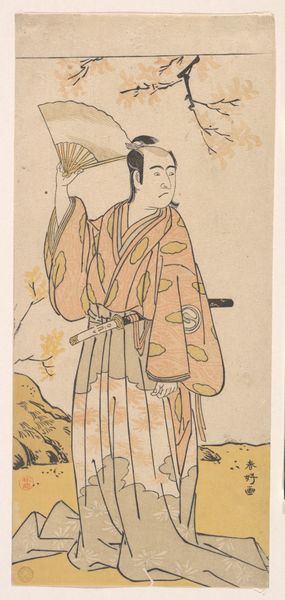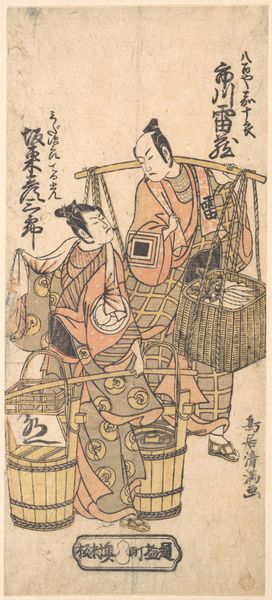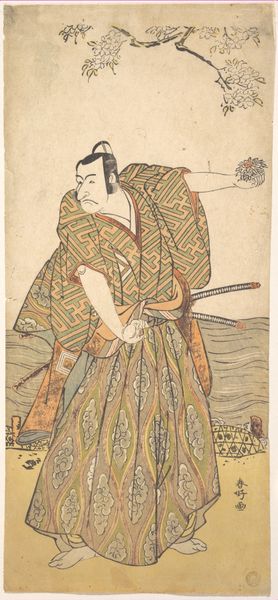
Ichikawa Omezō as Tomita Hyōtarō and Ōtani Oniji III as Ukiyo Tohei 1795
0:00
0:00
print, woodblock-print
#
portrait
# print
#
asian-art
#
ukiyo-e
#
text
#
woodblock-print
Copyright: Public domain
Editor: This print by Tōshūsai Sharaku from 1795, a woodblock print, titled "Ichikawa Omezō as Tomita Hyōtarō and Ōtani Oniji III as Ukiyo Tohei" presents these figures in rather unsettling poses and expressions. What draws your eye, what do you make of the cultural memory imbued here? Curator: The faces. The artist’s exaggerated portrayal reveals a societal tension. While these are actors, the distortions speak volumes about public perception and perhaps, even anxieties, surrounding their roles. Notice how their costumes also become emblematic of their status – the red check suggests a particular character archetype known to the audience. What else do you notice about the arrangement of the actors? Editor: It is almost unsettling—the actor in red dominates the composition by standing. What could be implied by his placement? Curator: Consider Kabuki theater. It was an event rife with social commentary, critique, and escapism for the public, who sometimes struggled with rigid class structures. These stage names are culturally significant—almost ritualistic, signifying legacy. In your opinion, how does the work serve the ritual function or act as cultural continuity? Editor: Seeing the performance aspect certainly contextualizes the strong facial expressions and gestures and ties back to a need for continuity within society by representing familiar stories. Curator: Indeed. This woodblock immortalizes a transient moment on stage, preserving both the play and the charged atmosphere of the theater. Looking at the past informs our understanding of what it means to perform, and to watch. Editor: Thanks to your guidance, this Ukiyo-e print becomes much more than just a picture, it is a reflection of a society's values and its ways of preserving memories. Curator: Precisely! By analyzing such works we get a sense of what the past has carried forward, thus better understanding how we construct our identity.
Comments
No comments
Be the first to comment and join the conversation on the ultimate creative platform.
